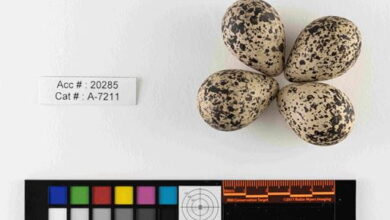
Considerations When Controlling Brush
By Andre Bonneau BSA, PAg., Range Management Extension Specialist, Prince Albert
Every year, ranchers go into the grazing season thinking about controlling brush. Brush encroachment is a serious issue throughout the province, but is especially problematic in the aspen parkland and in the northern grain belt. Aspen and balsam poplar, as well as willows in lower lying areas, are very aggressive on northern pastures and suckering can make this problem worse. Here are a few things to consider when tackling this problem.
Determine if the brush is really a problem. Excessive brush will affect forage production by either displacing the forage species or limiting livestock access to the forage. Before deciding to clear brush, managers should also consider its ecological value and the role of brush from a biodiversity and environmental sustainability perspective. A pasture with a healthy community of grasses, forbs, shrubs and trees provides habitat for birds, insects and wildlife and creates a stable and consistently productive pasture. Be aware that eliminating all the brush and trees on pasture may create unstable conditions over the long term.
Create a plan and follow it. Some brush problems seem overwhelming. It can be difficult to determine where to start and how to finish attacking the brush problem. Develop a logical, predictable and achievable brush control plan. Create a schedule of what portions of the brush will be addressed, how much time and money will be spent each season or year, pre-determine the control methods to be used and make a commitment to follow the plan. A consistent and methodical plan to control brush helps manage the workload and will contribute to the overall success of the plan.
Have a vision in mind. What will the field look like when you’re done? Whether the plan involves mowing or herbicide application, think about how the pasture will appear once you’re done. Aside from the increased forage supply, will the site be more accessible? Will standing dead brush or trees create barriers when they fall? After mowing, will the small stumps cause a problem with hooves or tires? How will grazing management need to change in the future to either control brush regrowth or deal with standing dead vegetation?
Be aware that standing brush can result in higher foot injury to cattle. One potential solution may be to mow the brush relatively high, higher than cattle naturally lift their hooves as they walk. If the cut twigs reach higher than the cattle raise their feet, the animal should be able to navigate through the area with minimal damage to their hooves.
Repeat as need. Mowing and some herbicide products tend to suppress brush growth rather than eliminate or control brush. It’s important to recognize brush control programs are rarely complete after a single herbicide application or a single mower pass. A brush control plan should include repeated herbicide applications and/or repeated mowing and may also require a change in grazing management to prevent the brush problem from recurring.
Brush management is an on-going process and should be part of a long-term pasture maintenance program. It is important to allow some flexibility within a plan as technology improves and financial opportunities and pressures present themselves.
In 2019, the ministry initiated a three-year project looking at various brush control options on pastureland with six sites located across the province. Field days will occur later this summer at each of the sites and producers can reach out to their local range management extension specialist or contact the Agriculture Knowledge Centre at 1 866 457-2377 for further information.
For the latest information and for more updates on everything Kindersley ‘Like’ the Kindersley Social Facebook page below…








































